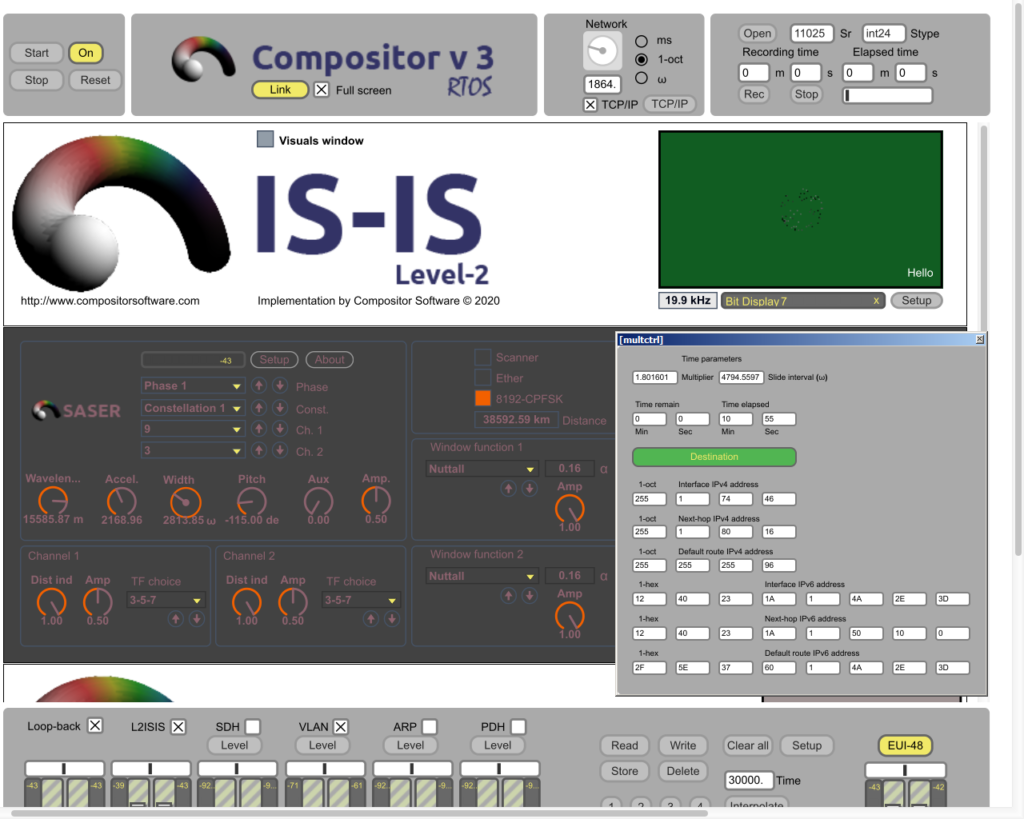Compositor v3 RTOS – analog radio interface for IPv6 Protocol
Compositor v3 Hypervisor Radio Shack software updated to RTOS. Now, Compositor RTOS v3.0.3 supports numerous new features, such as:
- Protocols implemented:
- RTC8k = IS-IS Level-2
- FF8 = ARP (Address Resolution Protocol)
- TC25 = VLAN (IEEE 802.1aq)
- Hierarchies added:
- AI-RT1024 = SDH STM-x
- N9000 = PDH E1
- Other features:
- TCP/IP protocols stack implemented
- TCP/IP window added
- EUI48 table added
- BPM now is the network field parameter of IP-address
- Network field includes 2^13 to define as IPv6-address
- All modules renamed to reflect new functionality

The main reason I made the update is to reveal the FF8 (ARP) and TC25 (VLAN) protocols work. That is why the working routine in Compositor RTOS v3.0.3 looks as following:
At the beginning, I set the time to reach the destination point, where the network deployed. I make this by setting deployment time in degrees from -180 to 180, which is the range from 0 to 60 minutes. Then I set the IP-address of destination interface the following way: the part of IP-address, pointing on the interface ID is set stochastically or manually. Multiplier in IPv4 sets the second field, which is the part of network and host. That is why the highest network for Compositor RTOS in IPv4 is 255.4.0.0. When I’ve reached the destination network and I’ve got the closed feedback loop on the loop-back interface output, I define the autonomous system type, which it belongs. I do this by enabling VLAN and ARP protocols and resolving the assignment of IPv4-addresses to the network devices of this autonomous system. I look into the IPv4-addresses of next-hops and reveal the number of such next-hops before returning to the first hop. The more hops IS-IS Level-2 protocol makes, the larger a metric of the destination network (autonomous system). This way I reveal all peers of the destination network.
When I define ABR (area border router) of that network using IS-IS Level-2 protocol, I turn the VLAN and ARP protocols off and start to translate this device information into IPv6 network, by enabling TCP/IP protocols stack. This process allows merging IPv4 networks with IPv6 networks and to expand the influence of my database into IPv6 protocol.